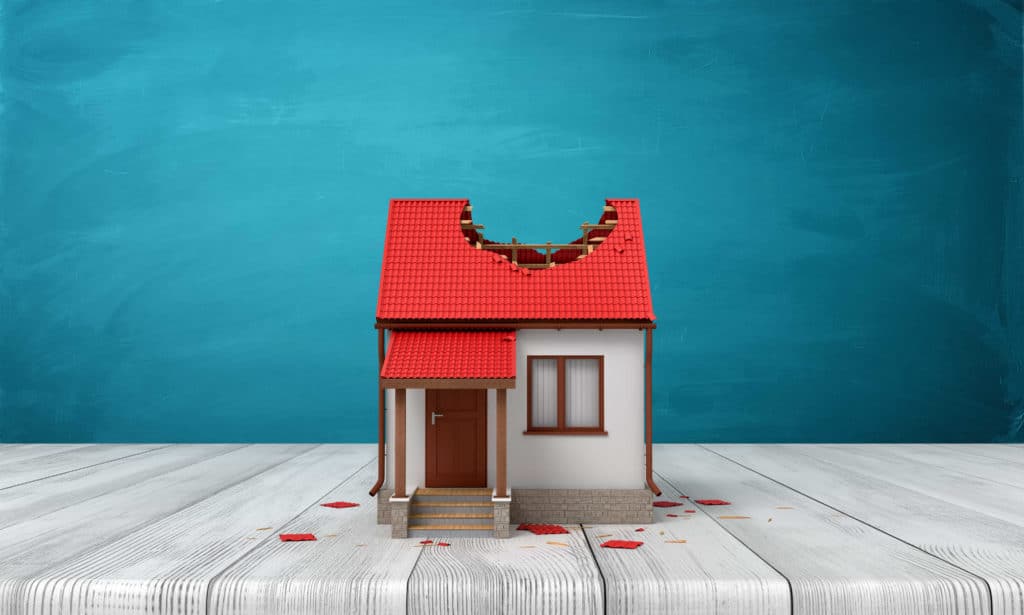Depending on when you purchased your home, you should’ve gotten a home inspection that informed you of the age and integrity of your roof. That way, the home’s roof could be maintained or replaced on a schedule that saves the homeowner money and unexpected repairs.
Roof Damage Can Eat Away At Your Entire Home

Roof health is critical to keeping your home protected from the elements and remaining structurally sound. A bad roof is almost as dangerous as no roof. A neglected roof will cause issues in the form of structural failure, water damage, and possible mold contamination.
If you are wondering about the longevity of your roof due to a storm or natural disaster, many companies offer free estimates and inspections. Call around and be aware of what you’re dealing with, and then give your homeowner’s insurance a call. After that, if you feel your insurance company is giving you the runaround or they have denied, delayed, or underpaid your claim, give the property damage lawyers at Steinger, Greene & Feiner a call and we will evaluate your case.
1: How Long Since You’ve Had Repairs?
Roofing that is more than 20 years old is either quickly approaching the end of its useful life or has already surpassed it. Roof expiration dates should be respected to avoid any issues that can severely damage the quality and resale value of your home.
As the age of your roof grows, you may start noticing everything else on this list. Shingles may come unattached, nail heads are more noticeable, or shingles are curling or discolored. It’s important to get your roof assessed quickly if you notice any of these issues.
The material your roof is made of also matters. Shingles are the cheaper option and need to be changed out every 20-25 years, while more durable roofs like slate, copper, or tile can last well past 50 years. Each roofing material comes with its own concerns. Examine the pros and cons of each type when considering a more durable replacement.
2: Structural Stability & Sagging.
We’ve all driven past the house whose roof is sagging inward toward the house itself or hanging lower on one side. In most cases, this is a gradual process that happens due to neglect. If you suspect moisture damage, grab a broom or mop and gently prod the area. If it gives like wet cardboard, you most likely have a bad leak.
Finding the source of the leak and repairing or replacing the roof is vital in maintaining the integrity of your home structure. Contact your home insurance company today to see if you’re covered.
A sagging roof can be repaired, but the key cause of the sagging roof must be identified accurately if you want any hope of fixing it. Structural repairs due to the age of the framework, water or environmental damage, or just the weight bearing down too much all have different fixes. Have your roof inspected by a professional for more information on how to proceed.
3: Signs of Mould Damage.
Unwanted greenery and vegetation on your roof is a big indicator that it’s time to replace. Mold, mildew, moss, and algae can start growing on the corners of your roof’s surface. This means that their roots are digging into the shingles of the roof, leaving them open for seepage and leaking into the house itself. As those plants continue to grow, the roots will dig deeper into the roof, dislodging shingles and widening gaps in your roof boards.
Mold and mildew can also come through as streaky discoloration to your shingles. As the discoloration spreads, pieces will break off. Make sure you’re paying attention to discoloration along with mold and vegetation growth.
4: Shingle health.
Are your shingles in neat rows? Or have they been torn out, flipped over, or curled on the edges due to the environment, sun damage, and old age? For asphalt and fiber roofs, shingles are your house’s main defense. When shingles start falling apart, shedding, or crumbling away, replacement is vital to maintain the structural integrity of your home and prevent any potential issues with interior leaks, mold, and staining.
Most home insurance policies do cover roof replacement, especially when that replacement is required due to a natural disaster or environmental damage. Be careful when dealing with the insurance company, as their top priority is keeping money in their own pockets. You’ve faithfully paid for your homeowner’s insurance for years, and you are entitled to that coverage.
5: Sun shines through roof boards.
If your attic is illuminated without electricity, you have a problem. If sunshine can get through your roof boards, then moisture can, too (and critters if you’re unlucky enough). So before you have to call an exterminator, call a roof inspection company to assess why the board separation is happening.
Settling from age, moisture expanding and shrinking the wood, and damage are all viable reasons why your roofing boards aren’t so snug anymore.
Get In Touch
 Homeowner’s insurance claims can be complicated and are often undervalued or denied for exaggerated exclusions or flat-out lies. If you think your roof should be covered by your homeowner’s insurance but your claim is denied, give us a call.
Homeowner’s insurance claims can be complicated and are often undervalued or denied for exaggerated exclusions or flat-out lies. If you think your roof should be covered by your homeowner’s insurance but your claim is denied, give us a call.
At Steinger, Greene & Feiner we know how insurance companies work, and we know how to prove they are falsely denying claims. Contact us at (800) 560-5059 at any time for a free case evaluation.
